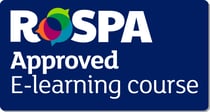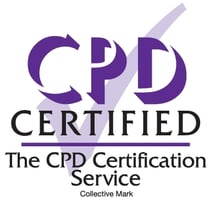Build a safety-first culture with our health and safety training courses
Creating a safe and compliant workplace starts with empowering your team. Our health and safety training options will equip your team with the knowledge they need to identify risks, reduce accidents, and ensure compliance with key regulations. From understanding hazard prevention to addressing workplace stress, our health and safety training offers the tools to protect your team and your business.

Show your team that their health and wellbeing matters most
91%
Mental Health UK’s Burnout report revealed that 91% of employees have experienced extreme or high stress levels at work.
17.1 million
An estimated 875,000 employees suffered from work-related stress in 2023, leading to 17.1 million working days lost.
61,000+
In 2023/24, workplace accidents accounted for 138 fatalities and over 61,000 non-fatal injuries reported under RIDDOR

Create a safer, healthier workplace for your team
Equip your team with the skills and knowledge to identify risks and maintain safety standards.
Our health and safety training courses cover critical health and safety topics, such as risk assessment, hazard recognition, and workplace wellbeing. You’ll also receive valuable tools to measure learning effectiveness, fix educational gaps, and gain access to regularly updated courses in several formats. Need a more custom approach to compliance learning? Explore our options below.
We partnered with Skillcast to create a bespoke learning experience for each colleague. It uses dynamic assignments and deadlines to help learners plan and lead their journey. And, by restructuring our learning portal, we were also able to improve accessibility, user experience, and adoption.
Lead Learning Design Partner UK Stores,
Tesco
Working Safely
Awareness of health and safety procedures can prevent injuries and save lives.
Read more
Fire Safety
Educate your staff on the fire safety controls your Company has in place and the measures they need to take to.
Read more
Healthy Working
There are risks to your physical and mental health and wellbeing wherever you work.
Read more
Mental Health at Work
Stress, anxiety and depression are serious health hazards in the workplace.
Read more
Experience compliance made simple with a Skillcast demo
Book your demo
Manual Handling
Educate your staff on the controls that your Company has in place and what measures they should implement to reduce the risks when lifting and handling at work.

Working Safely
Employees need to know how to protect their own health, safety and welfare as well as ensuring they don't cause harm to others.

DSE
Educate your staff on the controls that your Company has in place and how they can prevent ill-health if they regularly use Display Screen Equipment (DSE) at work.
Display Screen Equipment
Bring "Display Screen Equipment" e-learning to life using animation characters and storylines.
Slips and Trips
Bring "Slips and Trips" online training to life using animation characters and storylines.
Manual Handling
Bring "Manual Handling" e-learning to life using animation characters and storylines.
DSE
Educate your staff on the controls that your Company has in place and how they can prevent ill-health if they regularly use Display Screen Equipment (DSE) at work.

Lone Working
Lone working offers greater flexibility, autonomy and creates a broader talent pool for businesses.

Healthy Working
There are risks to your physical and mental health and wellbeing wherever you work.
Read more
Mental Health at Work for Managers
Stress, anxiety and depression are serious health hazards in the workplace.
Read more

First Aid Awareness
Regardless of whether an injury or illness has been caused by work, it is important that employees receive immediate support.
Read more

Menopause Awareness
Menopause is a health and safety, wellbeing and equality issue which affects people in different ways.
Read more

General Office Hygiene
Educate your staff on general office hygiene protocols to reduce common viruses and infections from spreading at the workplace.

Driving at Work
Educate your staff on the controls your Company has in place and what they should do to eliminate or manage the risks when driving at work.
Neurodiversity Awareness
Bring "Neurodiversity Awareness" online training to life using animation characters and storylines.
10 Essential Office Hygiene Practices
Bring "10 Essential Office Hygiene Practices" training to life using animation characters and storylines.
10 Steps to Healthy Working
Bring "10 Steps to Healthy Working" training to life using animation characters and storylines.
COSHH
Bring "COSHH" training to life using animation characters and storylines.
Electricity
Bring "Electricity" training to life using animation characters and storylines.
Fire
Bring "Fire" training to life using animation characters and storylines.
Noise
Bring "Noise" training to life using animation characters and storylines.
Personal Protective Equipment
Bring "Personal Protective Equipment" training to life using animation characters and storylines.
Transport
Bring "Transport" training to life using animation characters and storylines.
Work Equipment
Bring "Work Equipment" training to life using animation characters and storylines.
Working Safely
Bring "Working Safely" training to life using animation characters and storylines.
Menopause Awareness
Bring "Menopause Awareness" training to life using animation characters and storylines.
Mental Health at Work
Bring "Mental Health at Work" training to life using animation characters and storylines.
New and Expectant Mothers at Work
Bring "New and Expectant Mothers at Work" training to life using animation characters and storylines.

Ladders and Stepladders
Educate your staff on the controls that your Company has in place and what they should do to prevent accidents and incidents whenever they use ladders and/or stepladders at work.

Gain confidence in your compliance efforts
Available in Standard, Enhanced, or Premium packages, the Skillcast Portal gives you the tools to deliver company-wide compliance training with ease. Enhance your compliance e-learning with our comprehensive Learning Management System (LMS) — or use your own. You can also decide whether to start straight away with our off-the-shelf courses or customise our solutions to suit your specific needs. Want to learn more about how the Skillcast Portal can become your compliance e-learning partner?
Ready to simplify your compliance efforts?
Speak to our team to discuss your options. Whether you require a ready-made course or want to take advantage of our customisation options, we can help. By booking one of our demos, you'll experience our tools first-hand and see that we're the right fit. If you're a business with fewer than 50 employees, head to our 'Getting Started' page to learn more about CoreCompliance, a solution that equips smaller teams with the compliance essentials.
Common health and safety training course questions
Health & Safety
Common FAQs
